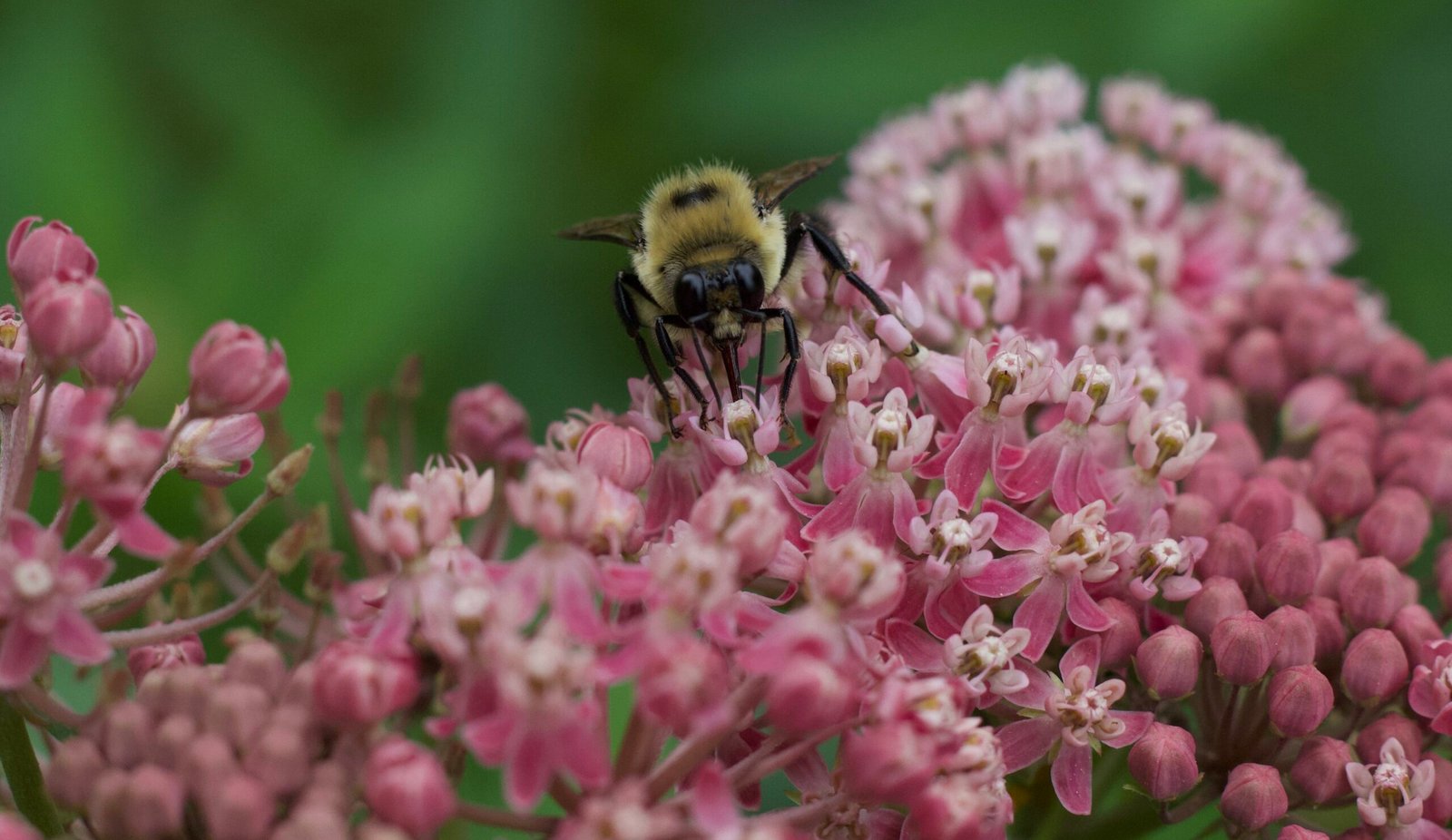If you’ve spent time in a native garden, you’ve almost certainly met bumble bees. These fuzzy, buzzing pollinators belong to the genus Bombus, and they are among the most important keystone species in North America. For me, they’re a personal favorite — gentle in nature despite their size, and endlessly fascinating to watch as they move from flower to flower. Bumble bees don’t just pollinate flowers — they are specialized “buzz pollinators,” shaking pollen loose from plants that other bees can’t service, making them critical for both wild ecosystems and food crops.
What Are Bumble Bees?
Bumble bees (Bombus genus) are large, social bees with distinctive black and yellow (sometimes orange or red) striping and a fuzzy body that makes them easy to recognize. Unlike honey bees, which are not native to North America, bumble bees are true natives — perfectly adapted to our landscapes. There are over 40 species of bumble bees in North America alone.
- Scientific Name: Bombus spp.
- Family: Apidae
- Common Name: Bumble bee
- Size: 0.4–1 inch long, depending on species
- Coloration: Black and yellow bands, some species with orange or red markings
- Native Range: Across North America, especially in temperate climates
- Habitat: Meadows, prairies, gardens, and forest edges
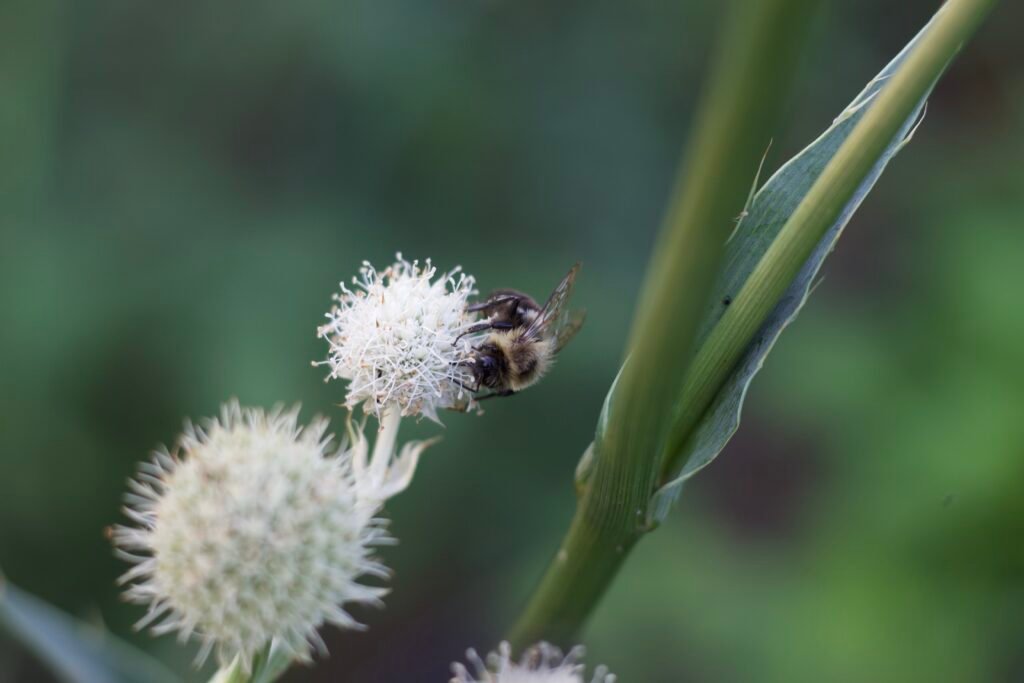
Life Cycle and Colony Structure
Bumble bees are social insects that form annual colonies. Unlike honey bees, their colonies do not overwinter.
- In spring, a mated queen emerges from hibernation, searching for a nest site (often an abandoned rodent burrow or grassy tussock).
- She lays eggs and begins rearing female workers.
- Once workers mature, they take over nest maintenance and foraging, allowing the queen to focus on egg-laying.
- By summer, the colony may reach 50–400 bees.
- In late summer to fall, drone males and virgin queens (gynes) are produced.
- As winter nears, the colony declines — the old queen, workers, and drones die, while newly mated gynes enter hibernation. These future queens are the only ones to survive the cold months, emerging in spring to begin the cycle again.
Pollination Power: Why Bumble Bees Matter
Bumble bees are exceptional pollinators because of their buzz pollination technique. They vibrate their bodies to shake pollen from flowers like tomatoes, peppers, blueberries, and many native plants. Without them, these plants would struggle to reproduce.
In native gardens, bumble bees are especially important for:
- Milkweeds (Asclepias spp.)
- Wild Bergamot (Monarda fistulosa)
- Coneflowers (Echinacea spp.)
- Prairie Clover (Dalea spp.)
- Blueberries (Vaccinium spp.)
Bumblebees are reliable pollinators, active even in cool or cloudy weather. Their high metabolism keeps them busy from dawn to dusk, visiting hundreds of flowers each day. In fact, they can pollinate six blueberry flowers in the time it takes a honeybee to manage one, making them far more efficient than many other pollinators.
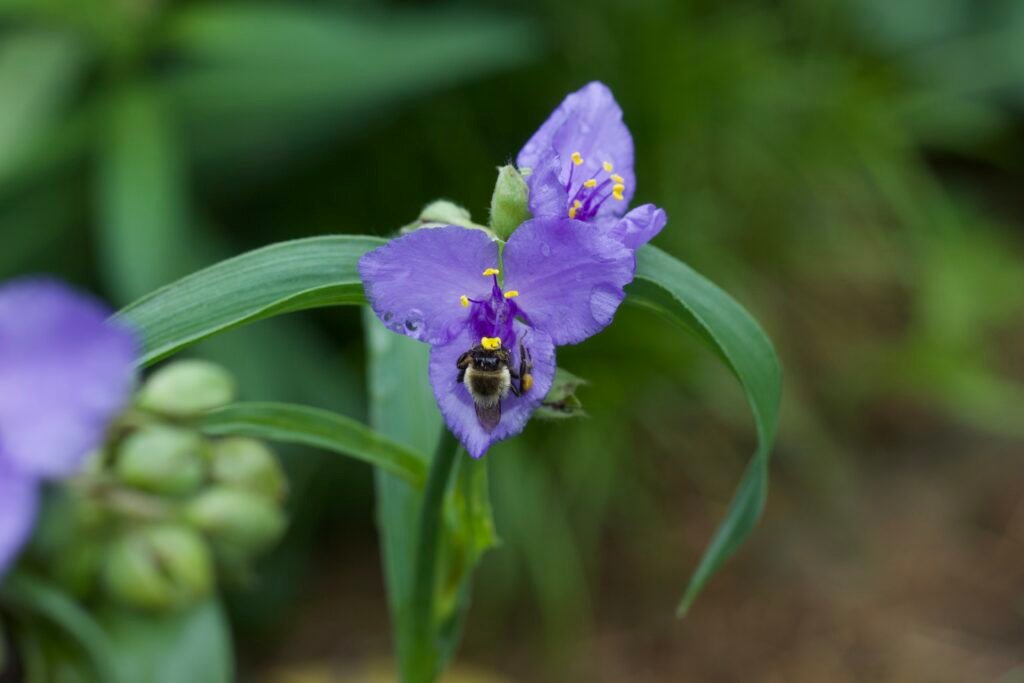
Threats to Bumble Bees
Many bumble bee species are in decline due to:
- Habitat loss and fragmentation
- Pesticide use (especially neonicotinoids)
- Climate change disrupting flowering cycles
- Competition with non-native honey bees
- Disease and other environmental pressures
The rusty patched and Franklin’s bumblebees are the only species currently protected under U.S. law, but others—like the American and Southern Plains bumblebees—are quietly disappearing. Creating pollinator-friendly spaces with native flowers can give these vital insects a fighting chance.
How to Support Bumble Bees in Your Garden
You can help sustain bumble bee populations right in your backyard:
- Plant native flowers that bloom from spring through fall for continuous nectar and pollen.
- Avoid pesticides and herbicides, especially systemic chemicals like neonicotinoids.
- Leave some “wild” areas in your yard, such as brush piles, tall grass, or undisturbed soil, for nesting. (Little bluestem, Switchgrass or other native grasses)
- Provide early spring bloomers (mentioned below) to feed queens emerging from hibernation.
- Plant in clumps, so bees can efficiently forage in one area.
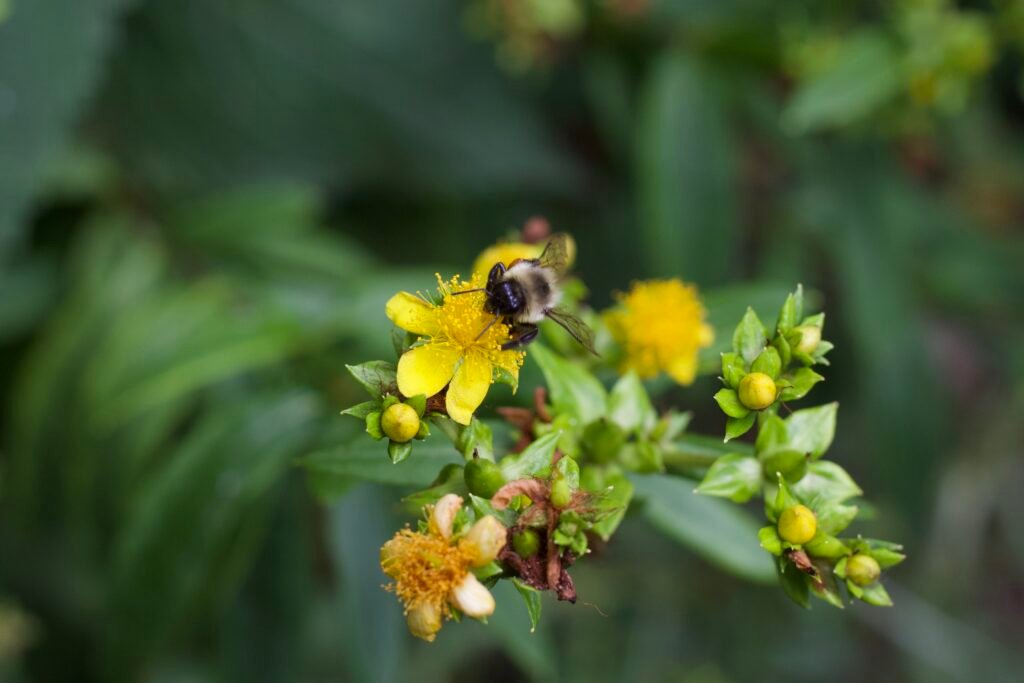
Here are some native flowers that provide nectar and pollen for bumble bees
Spring:
- Viola sororia (Common Blue Violet) – low-growing, early nectar source for emerging bumblebees
- Mertensia virginica (Virginia Bluebells) – tubular flowers perfect for long-tongued bumblebees
- Trillium grandiflorum (Large-flowered Trillium) – early spring bloom with pollen-rich flowers
- Salvia lyrata (Lyreleaf Sage) – early nectar & pollen source for ground-nesting bees
Summer:
- Monarda fistulosa (Wild Bergamot) – tall, aromatic flowers loved by bumblebees
- Echinacea purpurea (Purple Coneflower) – abundant nectar and pollen
- Liatris spp (Blazing Stars) – supports bumblebees with a rich source of pollen & nectar
- Lobelia siphilitica (Great Blue Lobelia) – tubular blue flowers for long-tongued pollinators
Fall:
- Aster novae-angliae (New England Aster) – late-season nectar for bees before winter
- Solidago spp. (Goldenrods) – pollen and nectar-rich, essential for fall foraging
- Symphyotrichum oblongifolium (Aromatic Aster) – smaller blooms, excellent late-season resource
- Eutrochium spp. (Joe-Pye Weeds) – a great way to support numerous pollinators in your native garden.
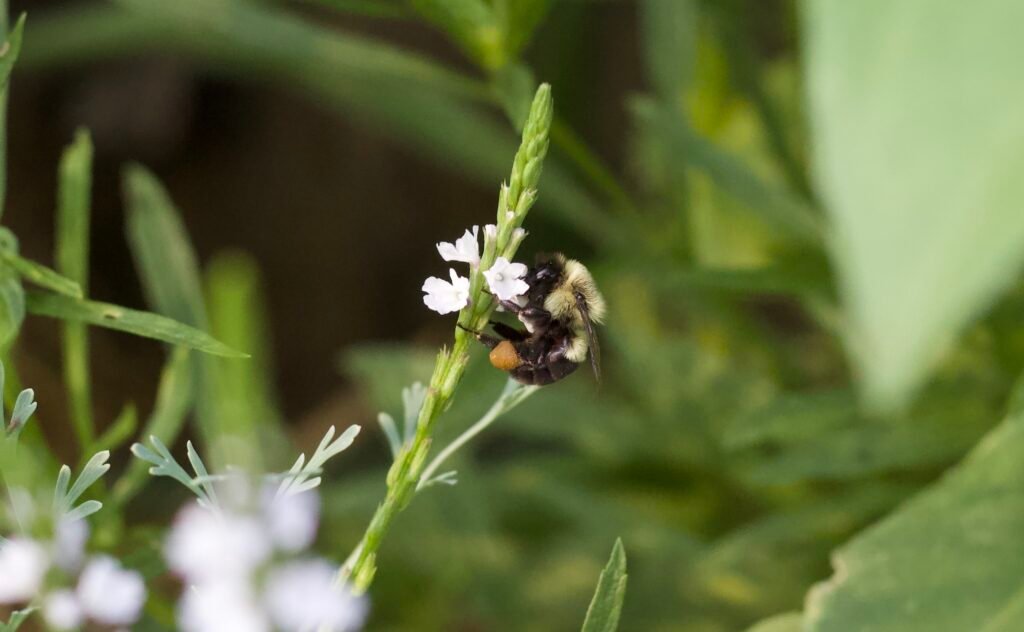
Wildlife Value
Bumble bees themselves support an incredible web of life. By pollinating native wildflowers and food crops, they sustain the seeds and fruits that feed birds, mammals, and insects. They are truly a keystone species — without them, ecosystems lose balance.
Conclusion
Bumble bees aren’t just garden guests—they’re essential partners in our ecosystems. I’ve always admired them for their gentle nature and the vital role they play in pollination. By planting native, pollinator-friendly flowers in our yards, we give these fuzzy foragers a fighting chance while helping to restore the resilience, diversity, and wild beauty of our native landscapes.
Check out the hive
The Hive is a personalized native plant database, curated from scientific resources and tailored to your exact ecoregion. It offers detailed growing information for over 75 species.

